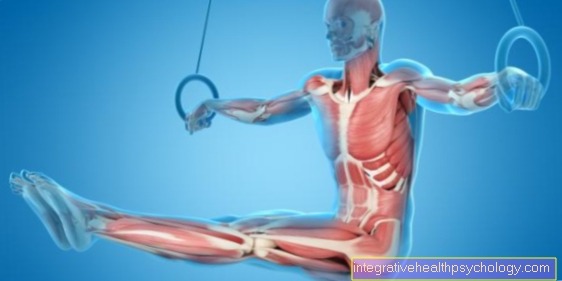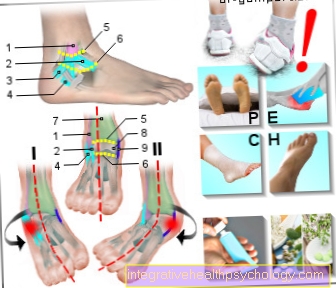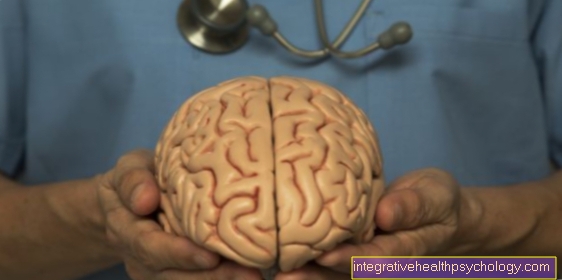Spermatic duct pain
What is a sore spermatic duct?
The spermatic duct, also called ducutus deferens, has its origin in the epididymis, from which it runs through the inguinal canal to the urinary bladder and ultimately flows into the urethra. Functionally, the spermatic duct plays a crucial role, especially for the transport of the sperm formed in the testes. In the context of diseases, this structure can cause pain. This is particularly the case with inflammation of the vas deferens, which in addition to this usually also affects the urethra and can lead to severe burning sensation when urinating.In order to avoid the serious consequences of such an inflammation, such as infertility, the timely diagnosis and initiation of therapy is of the utmost importance. With adequate treatment, however, no further restrictions are to be expected.

causes
In most cases, sensations of pain in the vas deferens are due to an infection with subsequent inflammation. However, these often do not originate in the vas deferens itself, but are primarily inflammations of the prostate, testicles or urethra. Frequent pathogens here are E. coli, enterococci or sexually transmitted infections such as chlamydia or syphilis. In almost all cases, inflammation is accompanied by severe burning pain when urinating, pain when ejaculating and occasionally discharge of pus.
In addition to inflammation, other causes of spermatic duct pain can also be causative. This includes the condition after a so-called vasectomy, i.e. a severing of the spermatic duct as a method of contraception. Furthermore, various masses can lead to compression or infiltration of the spermatic cord. These include spermatoceles, fluid-filled cysts of the epididymis, abscesses resulting from trauma, or tumors of the testicle or prostate. In rare cases, tumors of the vas deferens themselves, so-called vas deferens sarcomas, can lead to pain in the course.
Spermatic duct pain
after ejaculation
The spermatic duct is functionally involved in the transport of sperm during ejaculation through a rhythmic contraction movement of the muscles. If there are pathological changes in the structure, such as inflammation, these movements can lead to irritation and thus to a sensation of pain. This inflammation is particularly common in the prostate or urethra. However, stone disease, disorders of the nervous supply of the ejaculation system, a condition after surgery or radiation, the use of various drugs or tumors can lead to these symptoms.
after inguinal hernia surgery
In the context of inguinal hernias, which are usually treated surgically, pain in the vas deferens can occur over time. On the one hand, the surgical intervention in the groin itself usually irritates surrounding structures, such as the vas deferens. However, injuries to the spermatic duct during such operations cannot be ruled out and can lead to persistent pain. However, such complications are generally very rare.
after vasectomy
Following a vasectomy, i.e. cutting the spermatic duct, pain in the affected structure can occur for a few days. However, if the symptoms persist for more than a week, it is advisable to see a doctor in order to promptly identify and treat possible infections or surgical complications.
The so-called vasitis nodosa occupies a special position. This form of spermatic duct inflammation usually occurs after a vasectomy and is in most cases asymptomatic. This leads to a thickening of the skin layers and the cord muscles. Furthermore, nodules, so-called granulomas, form, which consist of the remaining sperm and inflammatory cells. This disease is often felt as a small mass in the inguinal canal and, in rare cases, is associated with pain.
diagnosis
In addition to a detailed survey of the medical history (anamnesis), a thorough physical examination is crucial for the diagnosis of spermatic cord pain. Possible primary inflammations of the prostate or testicles can be determined by enlarging and tenderness of the organ. Furthermore, differential diagnoses such as an inguinal hernia can be excluded. The physical examination is followed by a blood and urine test for inflammation parameters and bacteria, depending on clinical suspicion. The pathogen diagnosis is complemented by taking a smear. If the findings are unclear, an ultrasound examination is carried out first, which allows an assessment of the affected structures. In individual cases, further diagnostic means such as a CT, MRI or urological examination may be necessary.
accompanying symptoms
Depending on the underlying cause, different symptoms can occur with the pain in the vas deferens. In the frequent case of inflammation, those affected usually report severe pain when urinating and during sexual intercourse. They also indicate an increased need to urinate. Depending on the pathogen and the primary source of inflammation, whitish-yellow discharge can occur. If the inflammation starts from the testicles, these are usually enlarged and palpable and clearly sensitive to pressure. Pronounced inflammation can be accompanied by a general feeling of illness and fever. A similar clinical picture also emerges when abscesses are present.
blocked vas deferens
There are several causes that can lead to a blocked sperm duct and, in addition to pain, are associated with azoospermia, i.e. the lack of sperm in the ejaculate. Inflammations are to be listed here, which can lead to adhesions and ultimately to blockage of the vas deferens if they persist for a long time or if they are not treated adequately. Furthermore, a seldom occurring stone disease can lead to a closure of the conductor. The formation of cysts, which usually arise in the prostate, can also lead to these symptoms.
Read more on this topic at: Blocked vas deferens
swollen vas deferens
A swelling of the spermatic duct with pain sensation is in most cases due to inflammatory processes. In addition, a blockage of the vas deferens or constrictions occurring in the course are also possible causes. The latter can occur, for example, in the context of benign prostatic hyperplasias (benign prostate enlargement) or a tumorous process, which leads to a backlog of the seminal fluid and ultimately to swelling. Tumors of the spermatic duct itself, so-called spermatic duct sarcomas, can also lead to swelling, but are rare and can be excluded by performing an ultrasound scan.
Further interesting information on this topic can be found at: Sperm ducts swollen - what's behind it?
therapy
In the case of a bacterial inflammatory genesis of the pain in the vas deferens, antibiotic treatment must be used in most cases. The active ingredients used depend on the one hand on the diagnosed germ and on its resistance profile. In most cases, cephalosporins such as ceftriaxone or penicillins are used. On the other hand, an underlying syphilis responds best to the antibiotic metronidazole. Therapy can be accompanied by the administration of mild pain relievers such as ibuprofen or paracetamol. Surgical therapy is usually indicated for structural changes such as cysts or abscesses. Pain after operations, such as vasectomies or inguinal hernia operations, usually only require, in addition to clarifying possible complications, consistent, time-limited pain inhibition using suitable preparations such as ibuprofen.
forecast
Overall, a good prognosis can be assumed for pain in the spermatic cord. This is particularly the case with early diagnosis and initiation of therapy. If this is delayed, however, chronic inflammation can lead to adhesions of the spermatic cord, which, despite surgical rehabilitation, are often associated with significantly reduced or non-existent sperm transport. If the inflammation comes from inflamed testicles (orchitis), if the disease continues for a long time, it can lead to infertility due to reduced sperm production. However, thanks to the current possibilities of drug therapy, these courses are rare.



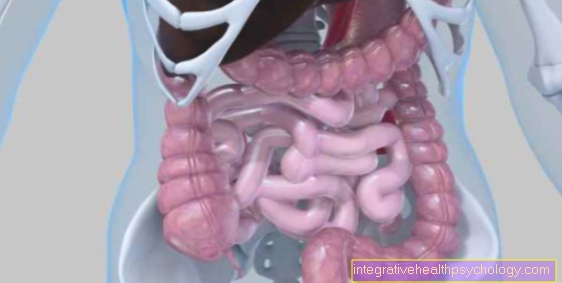


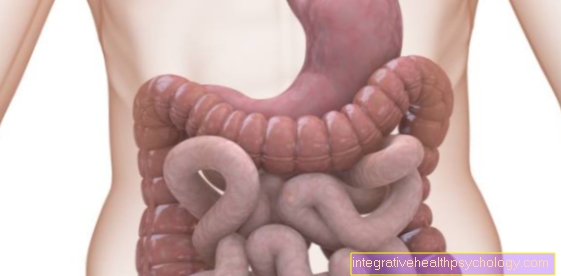

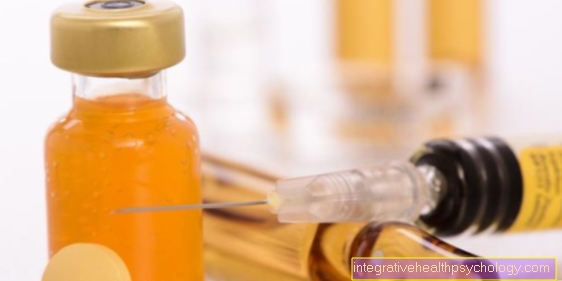

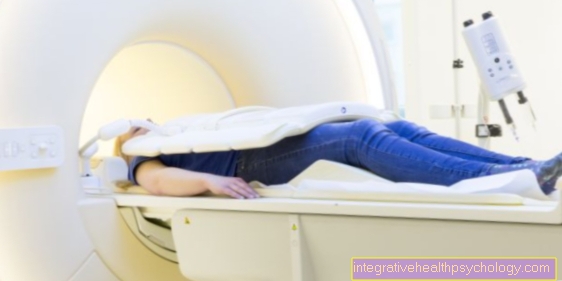

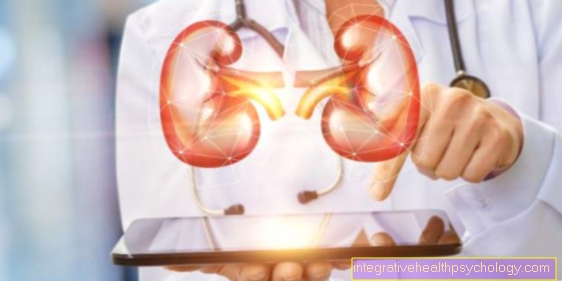



-mit-skoliose.jpg)



